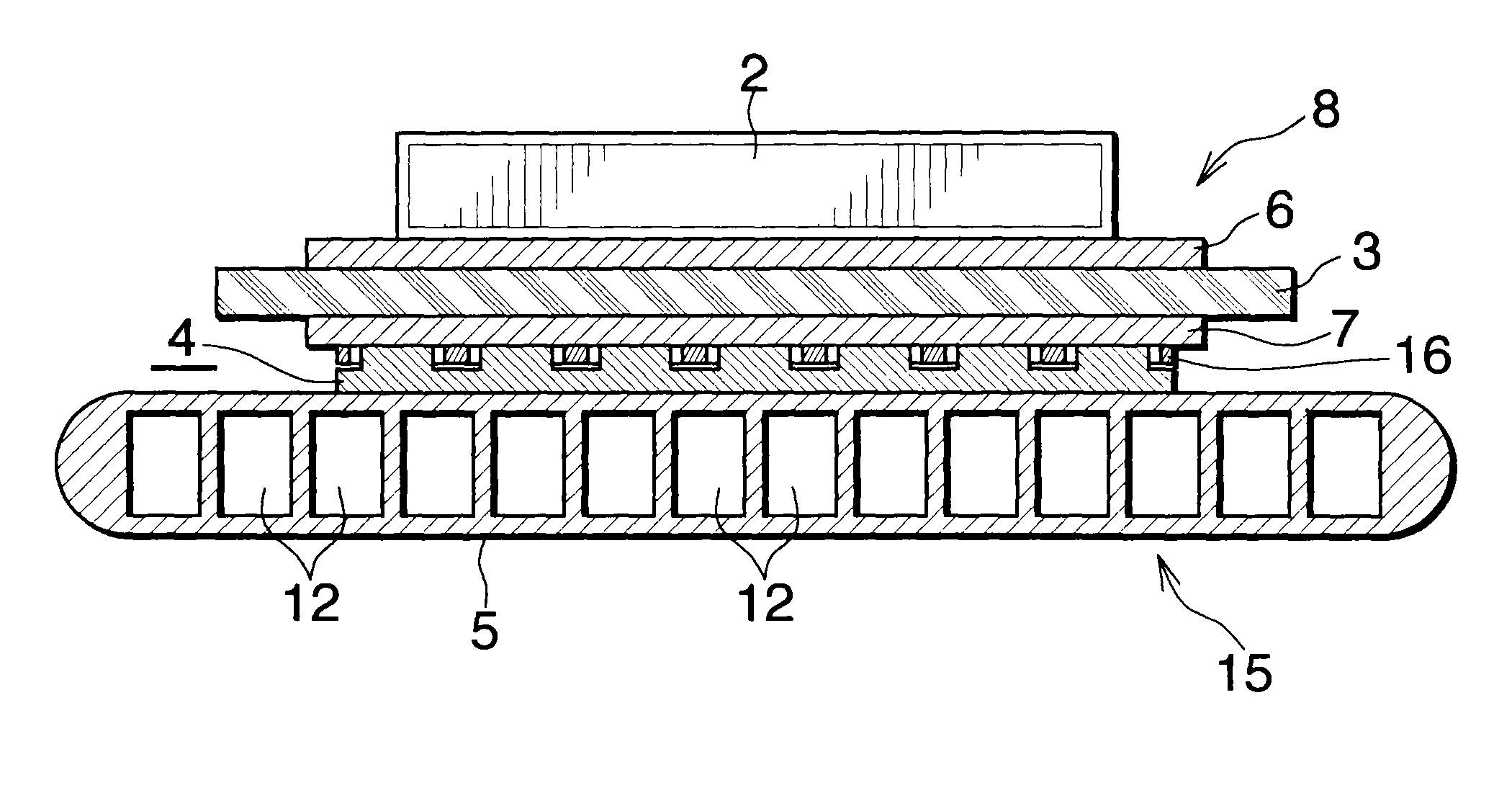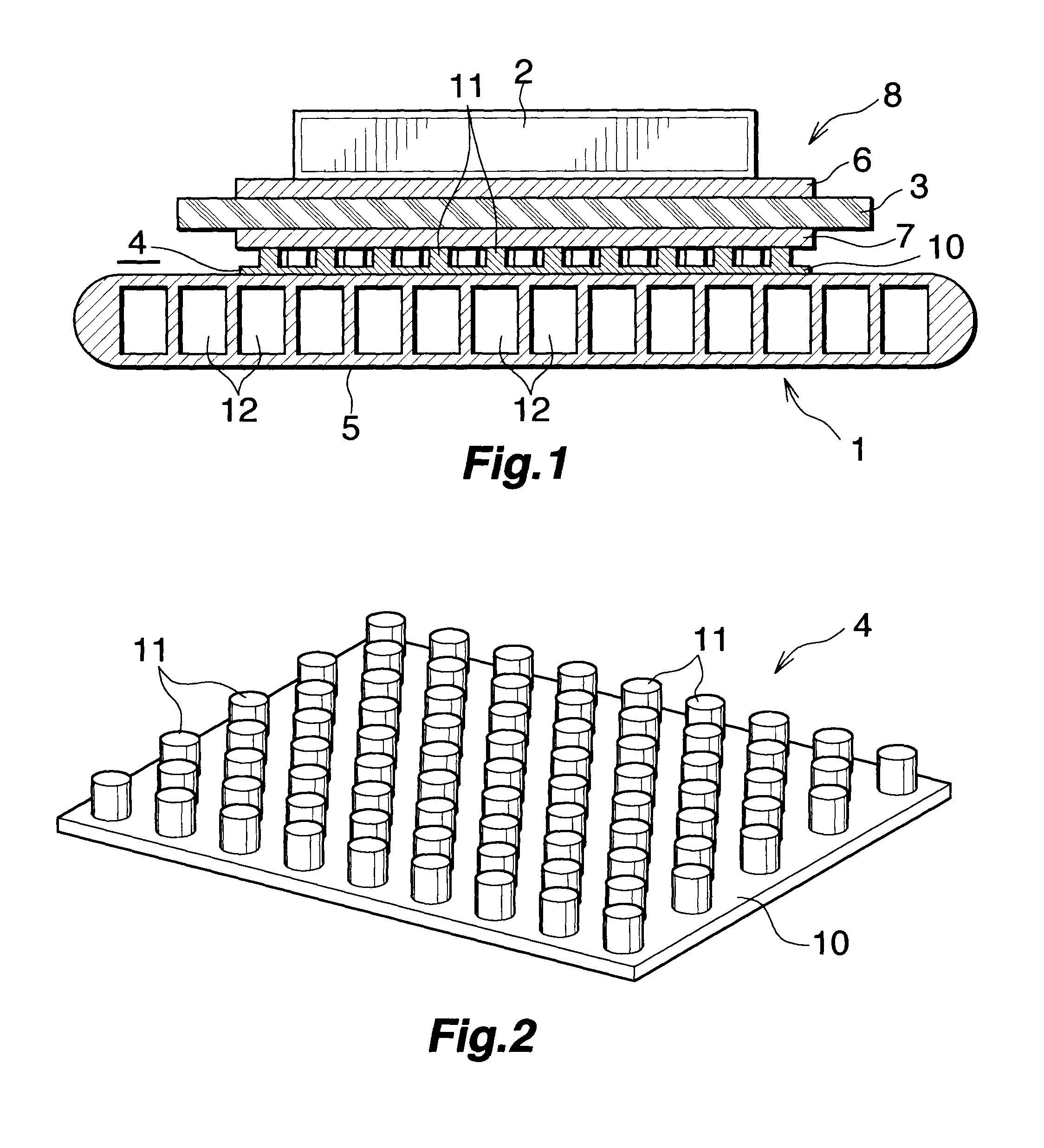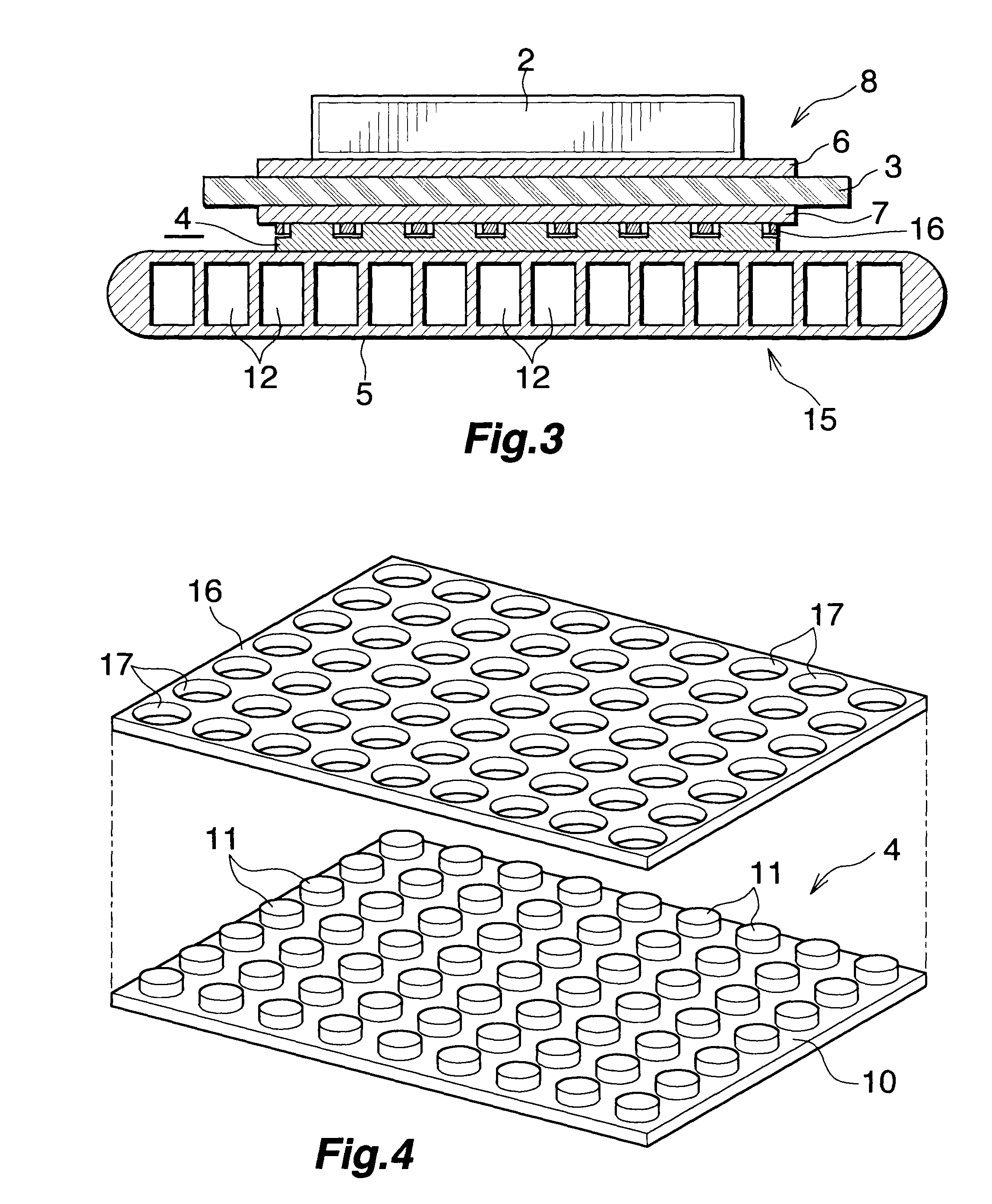Heat radiator and power module
a technology of heat radiator and power module, which is applied in the direction of final product manufacturing, sustainable manufacturing/processing, and semiconductor/solid-state device details. it can solve the problems of increasing material cost, affecting heat radiation performance, and cracking of insulating substrates, so as to improve heat radiation performance and prevent cracking. , excellent thermal conductivity
- Summary
- Abstract
- Description
- Claims
- Application Information
AI Technical Summary
Benefits of technology
Problems solved by technology
Method used
Image
Examples
embodiment 1
[0035]The present embodiment is shown in FIGS. 1 and 2.
[0036]FIG. 1 shows a portion of a power module which uses a heat radiator of Embodiment 1. FIG. 2 shows a stress relaxation member of the heat radiator of Embodiment 1.
[0037]In FIG. 1, the power module includes a heat radiator 1 and a semiconductor device 2; for example, an IGBT, mounted on the heat radiator 1.
[0038]The heat radiator 1 includes an insulating substrate 3 whose upper surface serves as a heat-generating-element-mounting side; a stress relaxation member 4 bonded to the lower surface of the insulating substrate 3; and a heat sink 5 bonded to the lower surface of the stress relaxation member 4.
[0039]The insulating substrate 3 may be formed of any insulating material, so long as it satisfies requirements for insulating characteristics, thermal conductivity, and mechanical strength. For example, when a ceramic is used to form the insulating substrate 3, aluminum oxide or aluminum nitride is used. A circuit layer 6 is fo...
embodiment 2
[0050]The present embodiment is shown in FIGS. 3 and 4.
[0051]FIG. 3 shows a portion of a power module which uses a heat radiator of Embodiment 2. FIG. 4 shows a stress relaxation member of the heat radiator of Embodiment 2.
[0052]In FIGS. 3 and 4, the stress relaxation member 4 similar in constitution to that of Embodiment 1, and a thermal-conduction plate 16 formed of a high-thermal-conduction material; herein, aluminum, and having a plurality of through-holes 17 allowing the respective projections 11 of the stress relaxation member 4 to extend therethrough are disposed between the power module substrate 8 and the heat sink 5 in a heat radiator 15. In Embodiment 2, the projections 11 of the stress relaxation member 4 are not formed in a staggered arrangement, but are formed in a grid arrangement. The thermal-conduction plate 16 is disposed above the plate-like body 10 of the stress relaxation member 4 in such a manner that the projections 11 extend through the respective through-hol...
embodiment 3
[0057]The present embodiment is shown in FIGS. 5 and 6.
[0058]FIG. 5 shows a portion of a power module which uses a heat radiator of Embodiment 3. FIG. 6 shows a stress relaxation member of the heat radiator of Embodiment 3.
[0059]In FIGS. 5 and 6, two stress relaxation members 4 similar in constitution to that of Embodiment 1 are disposed between the power module substrate 8 and the heat sink 5 in a heat radiator 20. The upper stress relaxation member 4 is disposed with the projections 11 facing downward, and the lower stress relaxation member 4 is disposed with the projections 11 facing upward. In Embodiment 3, the projections 11 of the two stress relaxation members 4 are not formed in a staggered arrangement, but are formed in a grid arrangement. The upper surface of the plate-like body 10 of the upper stress relaxation member 4 is brazed to the metal layer 7 of the power module substrate 8, and the lower surface of the plate-like body 10 of the lower stress relaxation member 4 is ...
PUM
 Login to View More
Login to View More Abstract
Description
Claims
Application Information
 Login to View More
Login to View More - R&D
- Intellectual Property
- Life Sciences
- Materials
- Tech Scout
- Unparalleled Data Quality
- Higher Quality Content
- 60% Fewer Hallucinations
Browse by: Latest US Patents, China's latest patents, Technical Efficacy Thesaurus, Application Domain, Technology Topic, Popular Technical Reports.
© 2025 PatSnap. All rights reserved.Legal|Privacy policy|Modern Slavery Act Transparency Statement|Sitemap|About US| Contact US: help@patsnap.com



